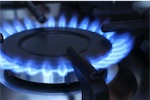What to do about mold in the home, how to avoid it, how to clean it up, is mold testing a good idea? etc. This blog focuses on residential mold tips. Many of these best practices are drawn from the following government-sponsored resources on healthy homes:
- Help Yourself to a Healthy Home, US Department of Housing and Urban Development (HUD)
- National Healthy Housing Standard [(NHHS) – Draft – June, 2013], National Center for Healthy Housing & American Public Health Association
I’m not always a fan of the simplified points structure and uni-directional language of healthy building rating systems, however, often these systems effectively whittle down complex concepts and scenarios into just a few sentences … this is from the NHHS:
Moisture Prevention & Control (6.1)
Requirements: Building material that is discolored or deteriorated by mold or mildew or causes a moldy or earthy odor shall be cleaned, dried, and repaired. Structurally unsound material shall be removed and replaced.
Removal and repair of moldy material shall be conducted in accordance with New York City Guidelines on Assessment and Remediation of Fungi in Indoor Environments. (Outside of NYC we recommend following the industry-accepted guidelines of the IICRC S520 – Standard and Reference Guide for Professional Mold Remediation)
The underlying cause of excessive dampness or moisture, or moldy or earthy odor shall be corrected.
Rationale: Indoor dampness and mold are associated with a variety of adverse health effects including asthma-related health outcomes and respiratory illness. Damp indoor environments can increase the presence of biological agents such as mold, dust mites, and bacteria.
Building Materials & Systems for Mold Prevention
Ventilation and Moisture Control (5.3)
Requirement: Natural or mechanical ventilation, or a combination of the two, shall deliver fresh air to every habitable room and bathroom and be capable of removing moisture-laden air and other contaminants generated during cooking, bathing, and showering. The air exhausted from a bathroom, toilet room, or kitchen shall not be vented into habitable space or an attic.
Rationale: Proper circulation of outdoor ventilation air throughout a habitable space, naturally through openings in the building envelope and/or mechanically with fans and HVAC systems, is important to dilute and remove airborne indoor chemical agents, and reduce airborne transmission of biological agents, humidity, and mold …








